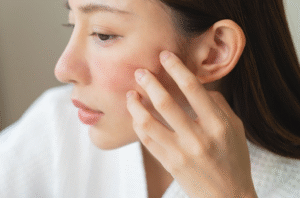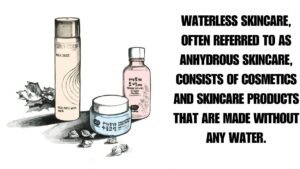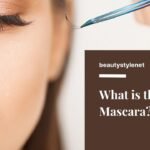Lip gloss is one of the most iconic beauty products enjoyed by people around the world. Its glossy shine and hydrating qualities have made it a go-to for accentuating natural lip color or dressing up any makeup look. However, behind the sparkling surface of lip gloss lay some untold stories.
From mysterious myths about bizarre old ingredients to evolving formulations now prioritizing plant-based materials, the history and modern reality of lip gloss are more complex than they seem.
In this blog post, we will separate lip gloss fact from fiction by investigating common myths, tracing the journey of ingredients over time, and addressing lingering concerns around animal welfare.
We’ll explore exactly what modern lip gloss is comprised of at its core and how that compares to rumored past concoctions. You’ll learn about alternatives for those seeking vegan or cruelty-free options that are just as luxurious as traditional glosses.
What Is Lip Gloss Made Of?
Lip gloss is a cosmetic product used to add shine and color to the lips. The main ingredients in modern lip gloss include:
- Oils: Lip gloss contains emollient oils that moisturize and condition the lips. Common oils include jojoba oil, sunflower oil, and avocado oil.
- Waxes: Waxy components like beeswax, carnauba wax, and candelilla wax give lip gloss its lush, creamy texture.
- Glycerin: A humectant that helps retain moisture on the lips.
- Colorants: Pigments provide shade and opacity. Popular pigments are iron oxides, carmine, and titanium dioxide.
- Flavors: Light fruity or mint flavors make lip gloss appealing to use. Common flavors are cherry, strawberry, and peppermint.
The exact formulation of lip gloss can vary between brands, but these key ingredients work together to impart shine and hydration.
Ingredients In Lip Gloss Over The Years
The ingredients in lip gloss have evolved alongside changes in cosmetic science and consumer preferences. Early lip glosses in the 1900s contained more wax and grease-like components for shine.
Modern formulations trend towards being more emollient and hydrating with the addition of oils and humectants. Some older lip glosses contained fragrance oils derived from animal sources which are now rarely used.
Is Lip Gloss Made Out Of Whale Sperm?
One common myth is that lip gloss was previously made using whale sperm. While some older cosmetic or pharmaceutical products did contain ingredients derived from whales, this was never the case for modern lip gloss.
Debunking The Myth
Lip gloss is a relatively new cosmetic, first appearing in the mid-1900s after most whaling had ceased. Its main purposeful ingredients are emollient oils, waxes, water, dyes, and flavors – none of which involve animal products or whale sperm. This myth seems to have originated from confusion between two different whale-derived ingredients used historically.
Origin Of The Myth About Whale Sperm
Whales were hunted commercially for many animal products from the 1800s to the early 1900s. One such product was spermaceti, a waxy substance found in the heads of some whale species. Spermaceti was used in candles cosmetic creams and pomades.
However, it was never an actual component of modern lip gloss formulae. The myth likely stems from mistakenly connecting “spermaceti” to “sperm” and associating its historic use in other products with lip gloss.
Use Of Spermaceti In Cosmetic Products
Spermaceti was highly valued as an ingredient in candles, cosmetics, and lubricants during the 18th and early 20th centuries due to its smooth texture. In particular, it was commonly used in cold creams and pomades intended to soften skin and hair.
When rendered and bleached, spermaceti takes on a creamy white color and leaves the skin feeling soft and supple. It helped form the silky base of many vintage cosmetic products. However, with declining whale populations due to overhunting, spermaceti became increasingly rare and expensive by the mid-1900s.
Synthetic alternatives for cosmetic uses were developed, and spermaceti today is no longer a mainstream ingredient.
Are There Animal Products In Lip Gloss?
While modern lip gloss itself does not contain animal ingredients, some brands may use animal-derived components in very minor roles:
- Beeswax: A natural emollient and thickening wax produced by honey bees. Used in some lip glosses for its smoothing properties.
- Carmine/Cochineal: A red pigment extracted from crushed insects that is designated as a natural colorant CI 75470. Present in some tinted lip glosses and lipsticks for color.
- Lanolin: A waxy fat secreted by sebaceous glands in sheep’s wool, used sparingly as a moisturizing agent in some formulations.
- Honey: The sweetener in some flavored lip glosses, though typically not as the main sweetener due to the risk of microbiological growth.
Examples Of Animal-derived Ingredients
To give some specific examples, Burt’s Bees lip glosses contain beeswax and honey. Some Revlon and L’Oreal lip glosses list carmine/cochineal in their ingredients. Bite Beauty Agave lip masks contain beeswax and lanolin. However, the majority of mainstream and drugstore lip glosses do not contain animal ingredients or carry cruelty-free certification.
Cruelty-free And Vegan Lip Gloss Alternatives
For consumers seeking to avoid any animal products, numerous cruelty-free and vegan brands offer lip gloss alternatives. Popular options include milky lip glosses from Glossier, Fruit Lip Glosses from Too Faced, and Vitamin Gel Lip Tints from ILIA Beauty.
Indie brands like Juniper, Herbivore Botanicals, and Peripera also provide outstanding natural formulations with no animal derivatives. By choosing from these options, one can gain all the benefits of lustrous lip gloss while keeping concerns for animal welfare in mind.
What Is Lip Balm Made Of?
Lip balm serves a similar hydrating function to lip gloss but has a thinner, waxy texture. The main ingredients in lip balm include:
- Petrolatum: Also called mineral oil jelly, this is the most common lip balm base ingredient and forms a protective, moisture-locking barrier on the lips.
- Oils: Lip balms often contain lightweight oils like coconut, jojoba, and sunflower oil for added hydration beneath the petrolatum layer.
- Waxes: Beeswax, carnauba wax, and candelilla wax give lip balm its solid yet meltable texture.
- Flavor/Color: Lip balms contain natural or artificial dyes and flavors like vanilla, cinnamon, and cherry. Titanium dioxide provides inorganic sun protection.
Additional Ingredients In Lip Balm
Depending on the brand, lip balms may also include:
- Humectants: glycerin and hyaluronic acid help attract and lock in moisture.
- Emollients: lanolin, cocoa, and shea butter soothe and condition lips.
- Preservatives: to prevent microbial growth during the balm’s shelf life.
- Antioxidants: vitamins C & E combat free radical damage from the environment.
Some lip balms aimed at severe chapping may add hydrocortisone or menthol for extra relief of cracked/dry areas.
Differences Between Lip Balm And Lip Gloss
Key differences between the two include:
Texture
The balm is thicker like a solid wax while gloss is a fluid emulsion
Finish
Balm hydrates without shine, gloss provides both moisture and luminous shine.
Occlusivity
The balm forms an impermeable barrier with petrolatum while gloss sinks in with oils/humectants.
Longevity
Balm lasts longer on the lips throughout the day before reapplication is needed.
Is There Whale Fat In Lipstick?
Historically, whale oil and fat were also used in lipstick production but have long been replaced. In the 1800s-1900s, whale oil served as a lubricating emollient and base for red dyes in some lipstick tubes. However, synthetic alternatives now take their place.
Understanding The Use Of Whale Fat In Lipstick
Whale oil offered strengths as a lipstick ingredient during the whaling era:
| Property | Description |
| Emolliency | Its smoothing effect softened and conditioned chapped lips. |
| Slip | Acted as a slidable lubricant between lips and the waxy lipstick surface. |
| Occlusivity | Formed an impermeable shield over lips when applied. |
| Dye Solubility | Helped red and pink dyes penetrate and saturate the waxy base. |
Availability Of Whale Fat In Different Lipstick Brands
While vintage luxury brands from the 1800s to early 1900s likely contained whale oil, modern mass-market lipsticks do not. Synthetic oils now fulfill the roles of whale oil once served without animal exploitation. Most major drugstore brands transparently list ingredients without animal derivatives. However, a small number of niche Victorian-inspired brands may still contain uncommon plant/animal ingredients so checking is advised.
Alternatives To Lipstick With Whale Fat
For cruelty-free assurance, popular vegan lipstick brands include Flower Beauty, MAC, NARS, Bite Beauty, ColourPop, and Urban Decay which explicitly omit animal-sourced components in favor of mineral oils, butter, waxes, and other synthetic substitutes. Their formulas perform just as well as traditional lipsticks while satisfying ethical concerns.
What Are The Risks Associated With Lip Products?
While lip gloss, lip balm, and lipstick aim to enhance lips when applied topically, under certain circumstances some potential risks can occur.
Potential Risks Of Using Lip Products
- Allergic reaction: Sensitivity to specific ingredients like fragrance, dye, or preservative is possible. Symptoms include swelling, redness, flaking.
- Microbial growth: Streptococcal or staphylococcal infection can develop from contaminated or outdated products kept past expiry.
- Accidental ingestion: If young children use these products, swallowing a mouthful could cause choking hazards or toxicity issues depending on the ingredients.
- Dermatitis: Wax-based products may cause contact dermatitis in susceptible individuals, presenting as cracked, flaky lips.
- Photosensitivity: Some synthetic colorants have been linked to increased sunburn risk if sun exposure occurs after application.
Allergies And Reactions To Ingredients
Common allergens to watch out for include red dye, fragrances, mint, or cinnamon flavors. Patch testing in a small area can help determine tolerance before broader use. Signs of reaction mean switching to a hypoallergenic formula.
Choosing Safe And Non-toxic Lip Products
To minimize the potential for harm:
- Check expiry dates and discard old products
- Choose fragrance-free when sensitive
- Use lip-safe SPF underneath instead of relying on lip products for sun protection
- Watch for signs of irritation and allergy
- Consider mineral makeup and natural brands for hypoallergenic options
- Store out of reach of small children and pets.
Frequently Asked Questions
What Was Lip Gloss Made Out Of?
Traditionally, lipids from animals like lanolin were used as emollients in early lip glosses. Nowadays, formulations rely primarily on vegetable oils like sunflower, jojoba, and avocado oil. Emollient waxes like beeswax along with humectants like glycerin are also typical components that moisturize lips without animal ingredients. Colorants, flavoring agents, and preservatives round out modern lip gloss recipes.
What Is Lip Gloss Base Made Out Of?
The base of lip gloss is typically a mixture of oils and waxes that give it a smooth, luxurious texture. Common oils are jojoba, sunflower, and coconut which condition lips. Beeswax and candelilla wax provide structure. Water or solvents allow the right consistency. Humectants like glycerin keep the mixture from separating.
Are There Animal Products In Lip Gloss?
While some glosses still contain trace beeswax or honey, the vast majority of mainstream brands are formulated without ingredients from animal sources. For strict veganism or avoiding animal testing, checking for cruelty-free certification is advised. The bulk of modern lip gloss is formulated using alternative plant-based oils, waxes, and nutrients rather than meat or dairy derivatives.
Final Thoughts
By gaining a better understanding of lip gloss history and ingredient evolution, it’s easy to see how myths can form but also be dispelled through research. Modern cosmetic science has created effective natural alternatives so that products like lip gloss better cater to various values and lifestyles while still delighting users.
Developing informed choices comes down to scrutinizing labels closely and supporting cruelty-free brands. With so many lovely options available, everyone can find glosses that both nourish lips and align with their ethics.











